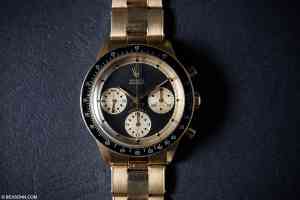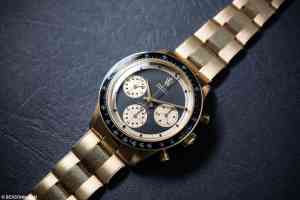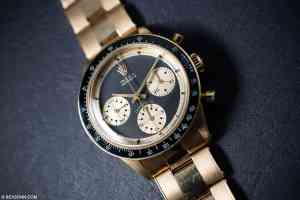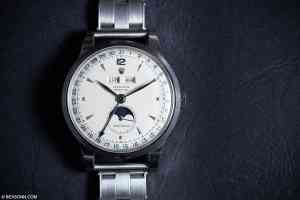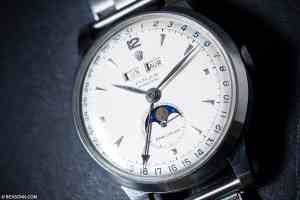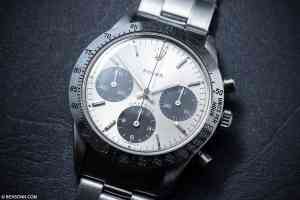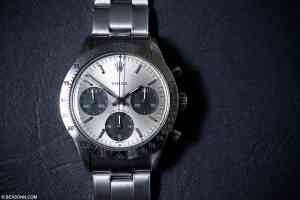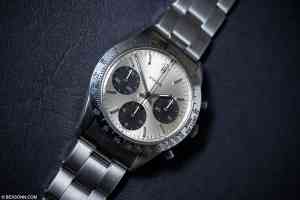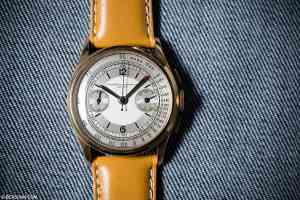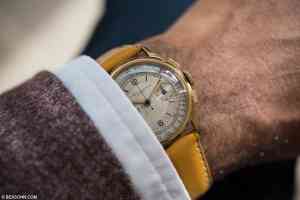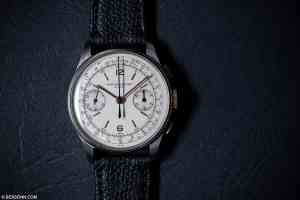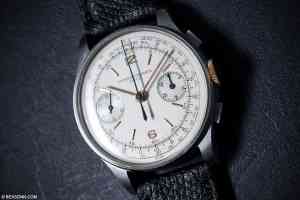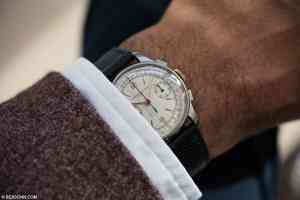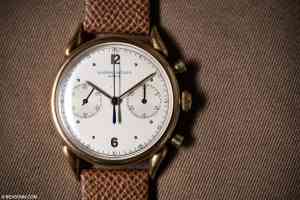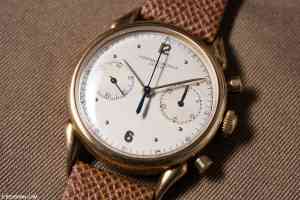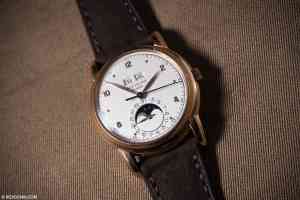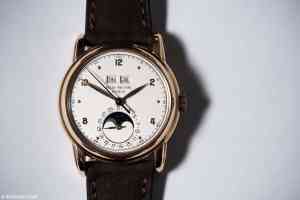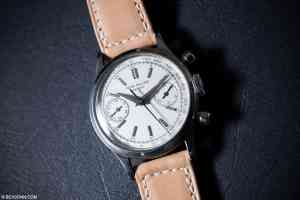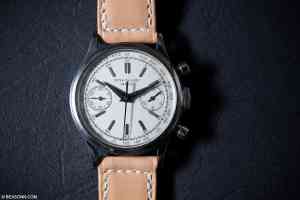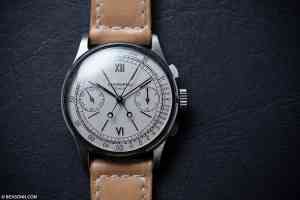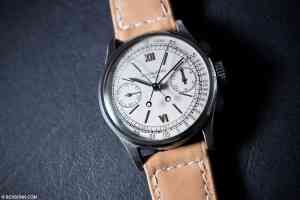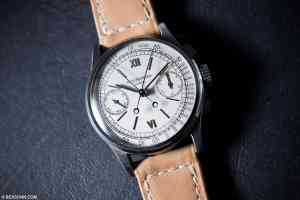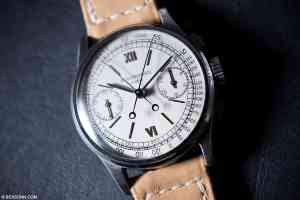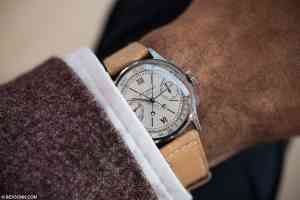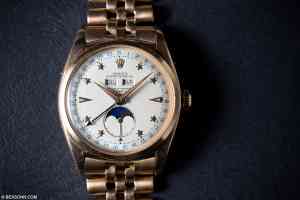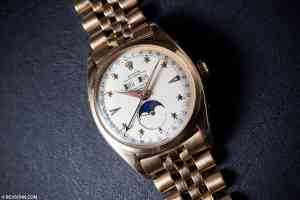Phillips Watches – The Geneva Watch Auction TWO: Phillips Watches successfully completed their first watch auctions during the month of May this year (Glamorous Day-Date & Auction: ONE). Of course this wasn’t without the help of the peerless Aurel Bacs, along with his wife Livia Russo, who need no introduction. Aurel Bacs’ mission with Phillips has been clear from the start; to only auction the best of the best and this my dear readers is exactly what he has done again with of course the help of his knowledgeable team. The Auction: TWO catalogue is lavishly filled with the most superlative examples from cover-to-cover.
Last week we were invited to the Phillips Head Office in London’s Berkeley Square to get up close with some of the rarest and truly exquisite timepieces that will be auctioned during the weekend of the 7th & 8th November sale that will once again take place in Geneva. Below are some of our absolute favourites that will go under the hammer this autumn.
 1968 ROLEX DAYTONA “SOLO ROLEX QUICK SILVER” REF. 6239
1968 ROLEX DAYTONA “SOLO ROLEX QUICK SILVER” REF. 6239
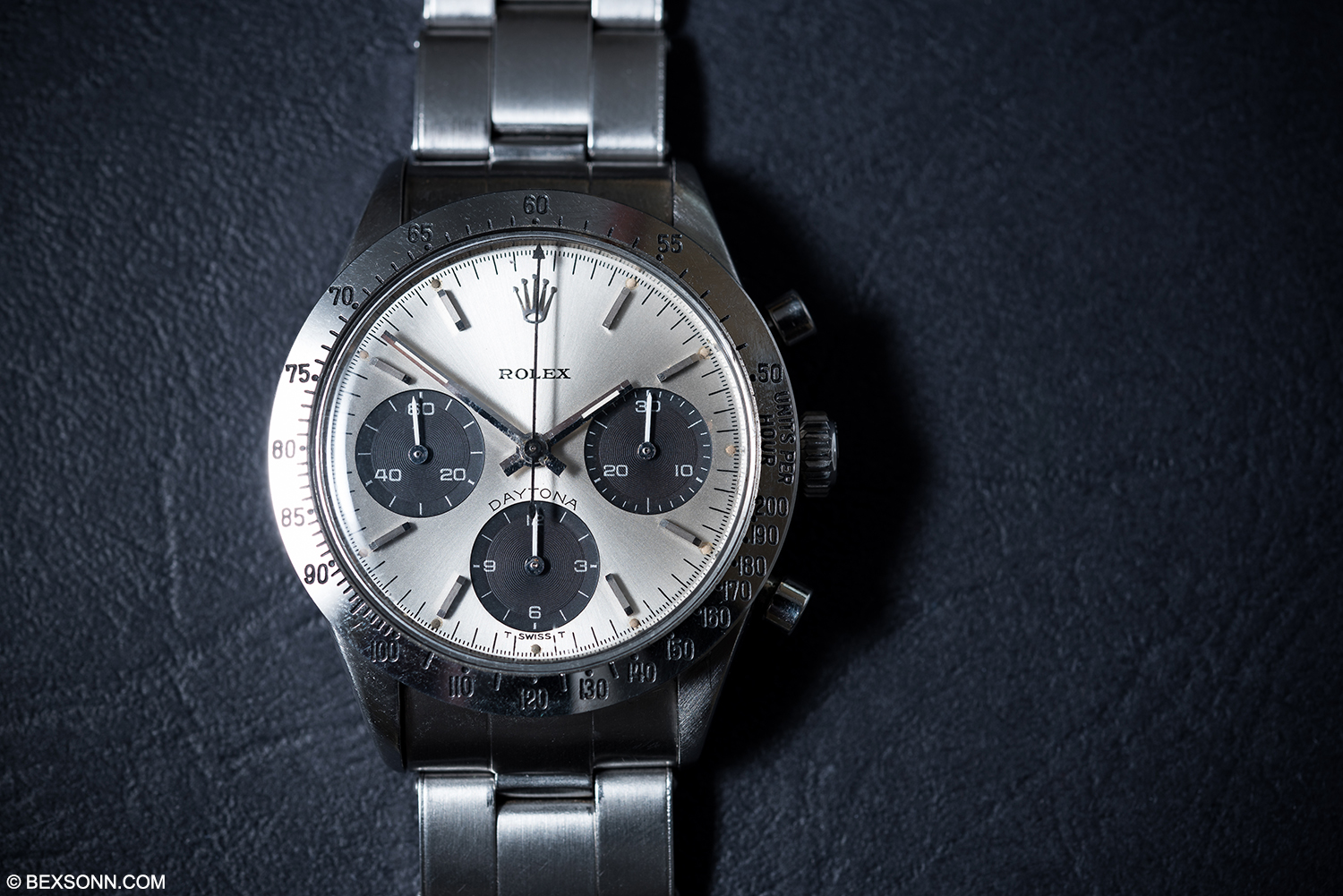 Lot 126: There are some serious exquisite Daytona examples in the upcoming auction of Phillips but it could be said that none come rarer than this Rolex Daytona ref. 6239 “Solo Rolex Quick Silver” why? Well, as you’ll notice that dial is rather sparse compared to your otherwise run of the mill 6239 Cosmographs’ – hence the nickname. And while that makes this particular example indeed rare it also sports a few other traits that make it quite special too.
Lot 126: There are some serious exquisite Daytona examples in the upcoming auction of Phillips but it could be said that none come rarer than this Rolex Daytona ref. 6239 “Solo Rolex Quick Silver” why? Well, as you’ll notice that dial is rather sparse compared to your otherwise run of the mill 6239 Cosmographs’ – hence the nickname. And while that makes this particular example indeed rare it also sports a few other traits that make it quite special too.
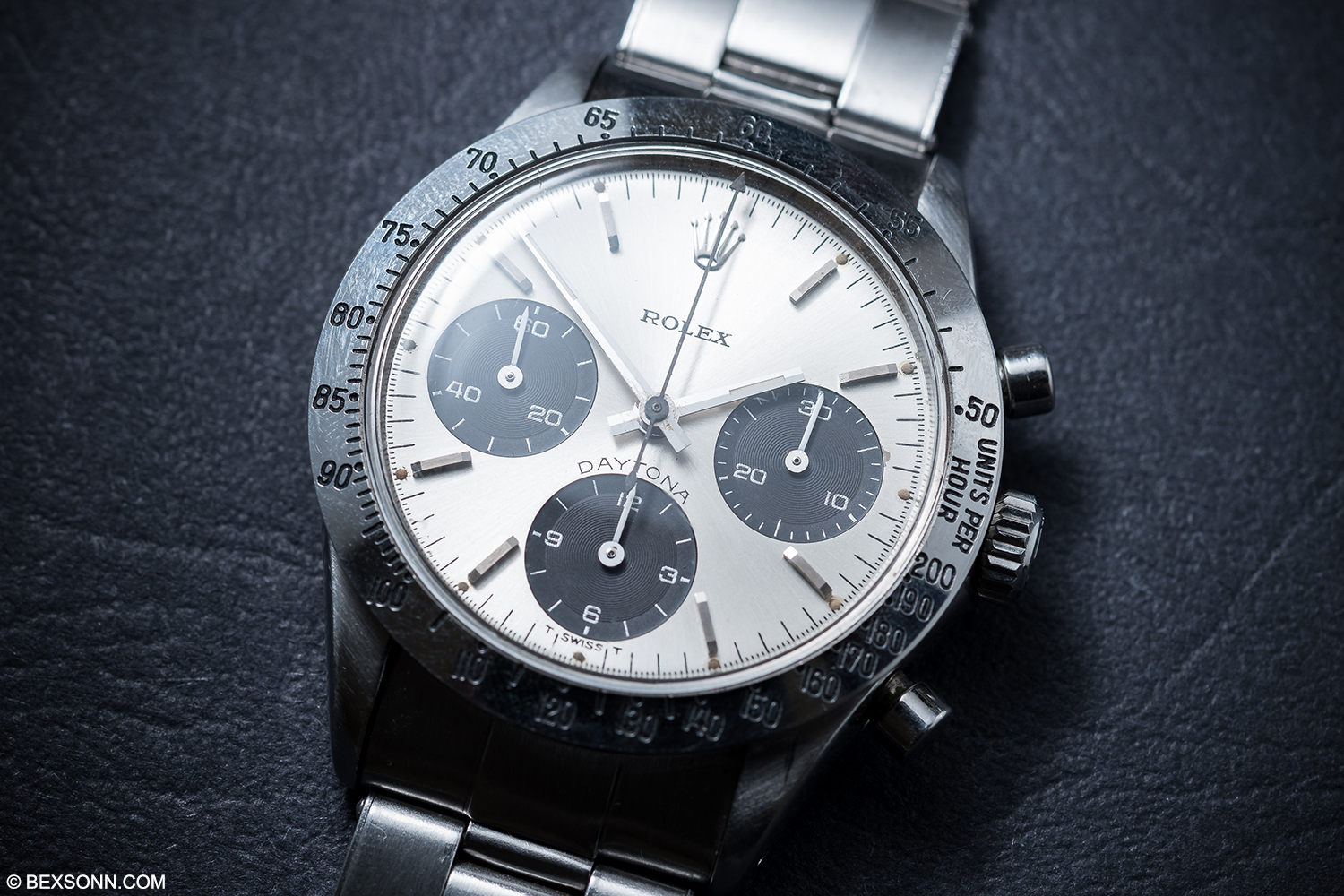 This reference 6239 features a beautiful silver sun-ray dial, with oversized black subsidiary registers that have unusually been printed with silver graphics instead of the more common white. Just above the hour chronograph register is the inscription ‘DAYTONA’ in dark grey. Most notably is the inscription of ‘ROLEX’ unaccompanied by Cosmograph, which does lend a somewhat balanced look to the dial layout. It goes without saying that the condition of this piece is rather exceptional and I’m sure it will fetch a rather hefty sum.
This reference 6239 features a beautiful silver sun-ray dial, with oversized black subsidiary registers that have unusually been printed with silver graphics instead of the more common white. Just above the hour chronograph register is the inscription ‘DAYTONA’ in dark grey. Most notably is the inscription of ‘ROLEX’ unaccompanied by Cosmograph, which does lend a somewhat balanced look to the dial layout. It goes without saying that the condition of this piece is rather exceptional and I’m sure it will fetch a rather hefty sum.
Estimate: €224,000 – €456,000
 1938 VACHERON CONSTANTIN REF. 4072
1938 VACHERON CONSTANTIN REF. 4072
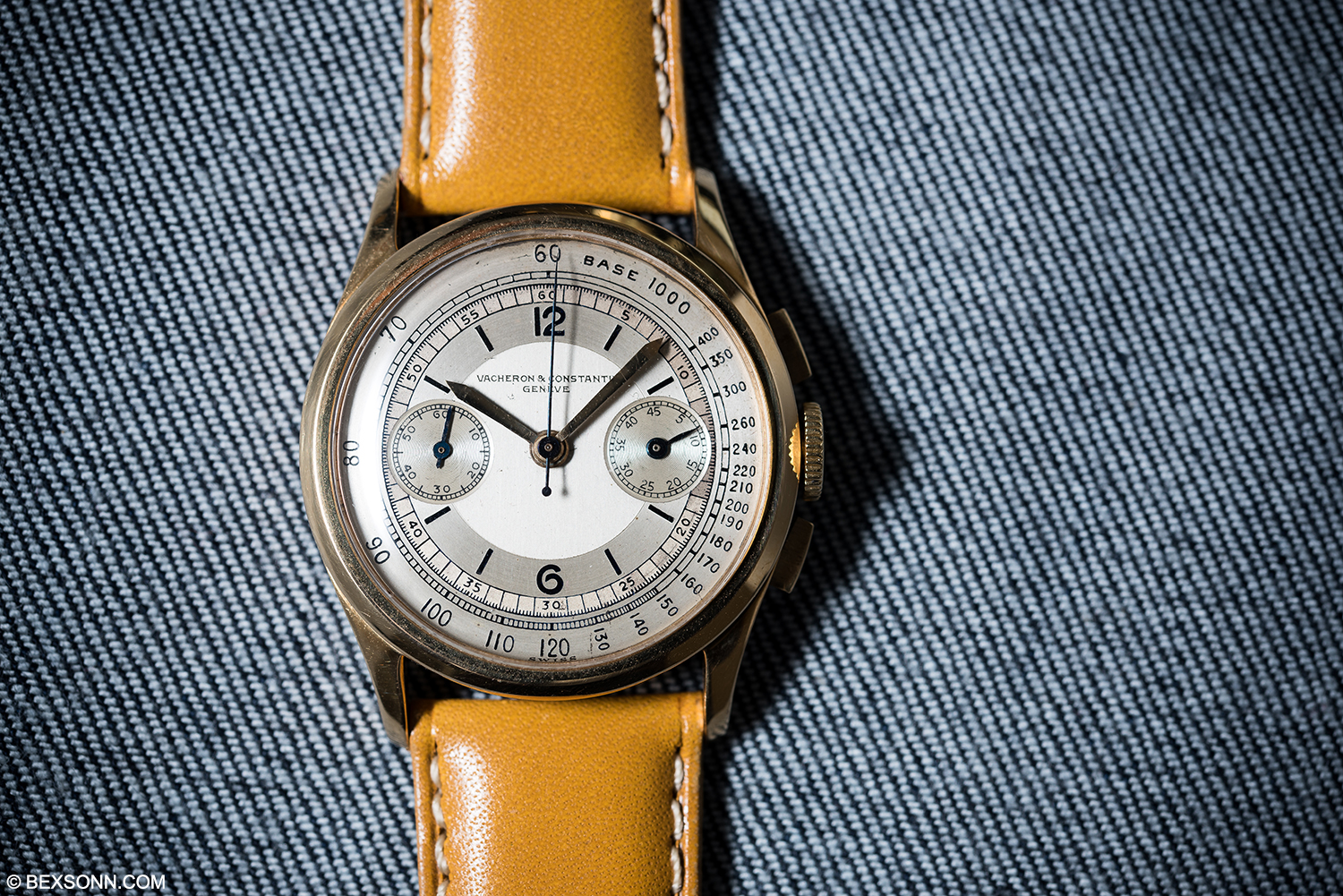 Lot 129: Another one of our picks and probably a more understated timepiece is this Vacheron ref. 4072. Alongside the ref. 4178, the 4072 is one of my favourite chronographs from Vacheron. While their vintage timepieces probably don’t have as much of a cult following as Patek’s, in my opinion, they deserve more of a mention and this particular example is probably as good as it gets in yellow-gold.
Lot 129: Another one of our picks and probably a more understated timepiece is this Vacheron ref. 4072. Alongside the ref. 4178, the 4072 is one of my favourite chronographs from Vacheron. While their vintage timepieces probably don’t have as much of a cult following as Patek’s, in my opinion, they deserve more of a mention and this particular example is probably as good as it gets in yellow-gold.
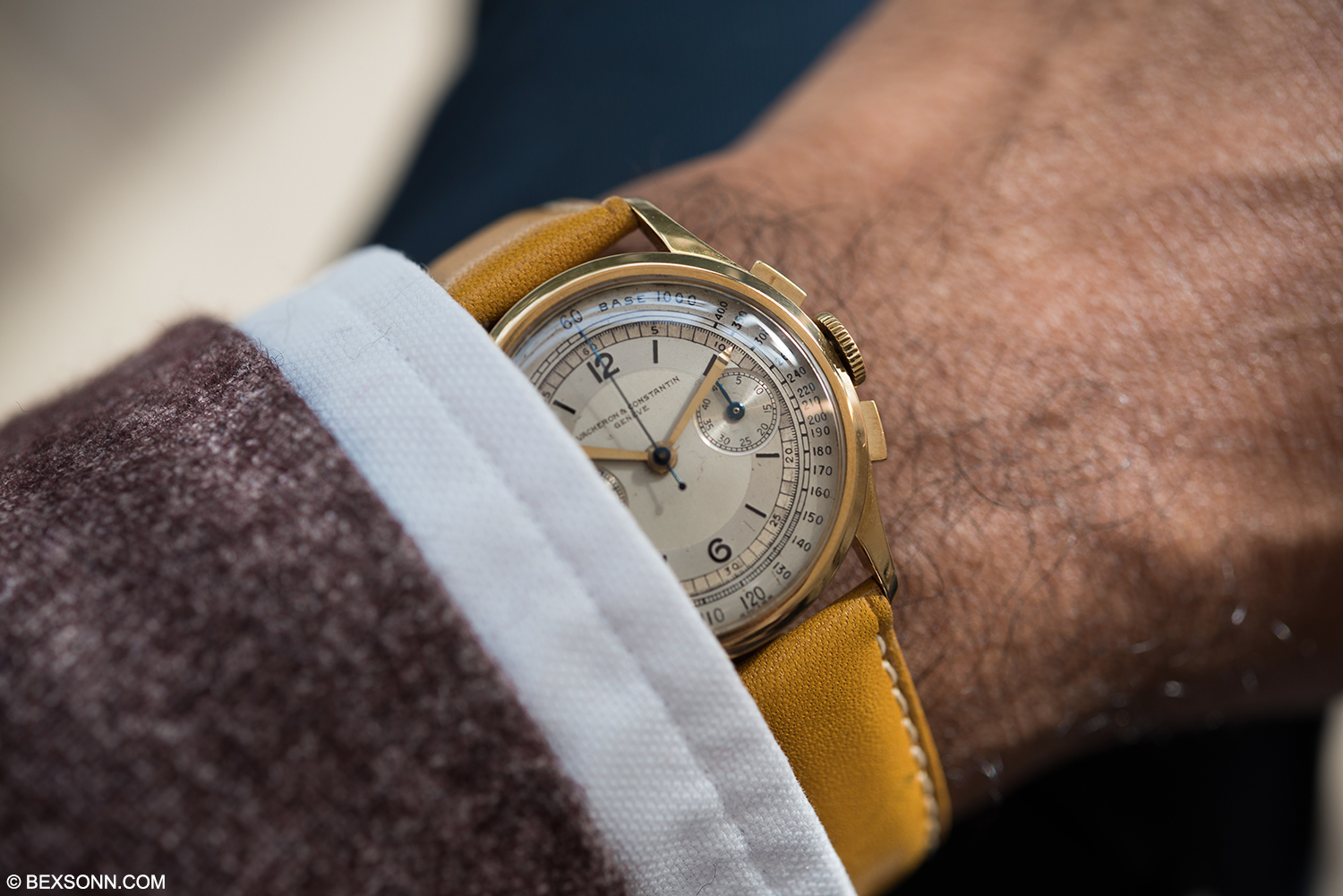 This Vacheron reference 4072 is one of the early examples that surprisingly enough spanned almost 30 years in production. This early ref. 4072 makes use of the calibre 13”’VZ 295, which you may have read me loosely mention here before. The calibre 295 was only housed in 24 yellow-gold examples, of which this is one. The most striking feature of this ref. 4072 is the multi-tone silver dial, with raised hour makers and scales in black enamel; a technique known as champlevé. While the case does seem rather small at 34mm, it’s worth mentioning that this was a pretty common size of chronographs during this era but more importantly the case has been well-preserved. This reference 4072 by Vacheron Constantin is the epitome of Vacheron’s timeless pieces and I’m sure it will do respectably well under the hammer.
This Vacheron reference 4072 is one of the early examples that surprisingly enough spanned almost 30 years in production. This early ref. 4072 makes use of the calibre 13”’VZ 295, which you may have read me loosely mention here before. The calibre 295 was only housed in 24 yellow-gold examples, of which this is one. The most striking feature of this ref. 4072 is the multi-tone silver dial, with raised hour makers and scales in black enamel; a technique known as champlevé. While the case does seem rather small at 34mm, it’s worth mentioning that this was a pretty common size of chronographs during this era but more importantly the case has been well-preserved. This reference 4072 by Vacheron Constantin is the epitome of Vacheron’s timeless pieces and I’m sure it will do respectably well under the hammer.
Estimate: €27,300 – €45,600
 1955 VACHERON CONSTANTIN REF. 6087 “CORNES DE VACHE”
1955 VACHERON CONSTANTIN REF. 6087 “CORNES DE VACHE”
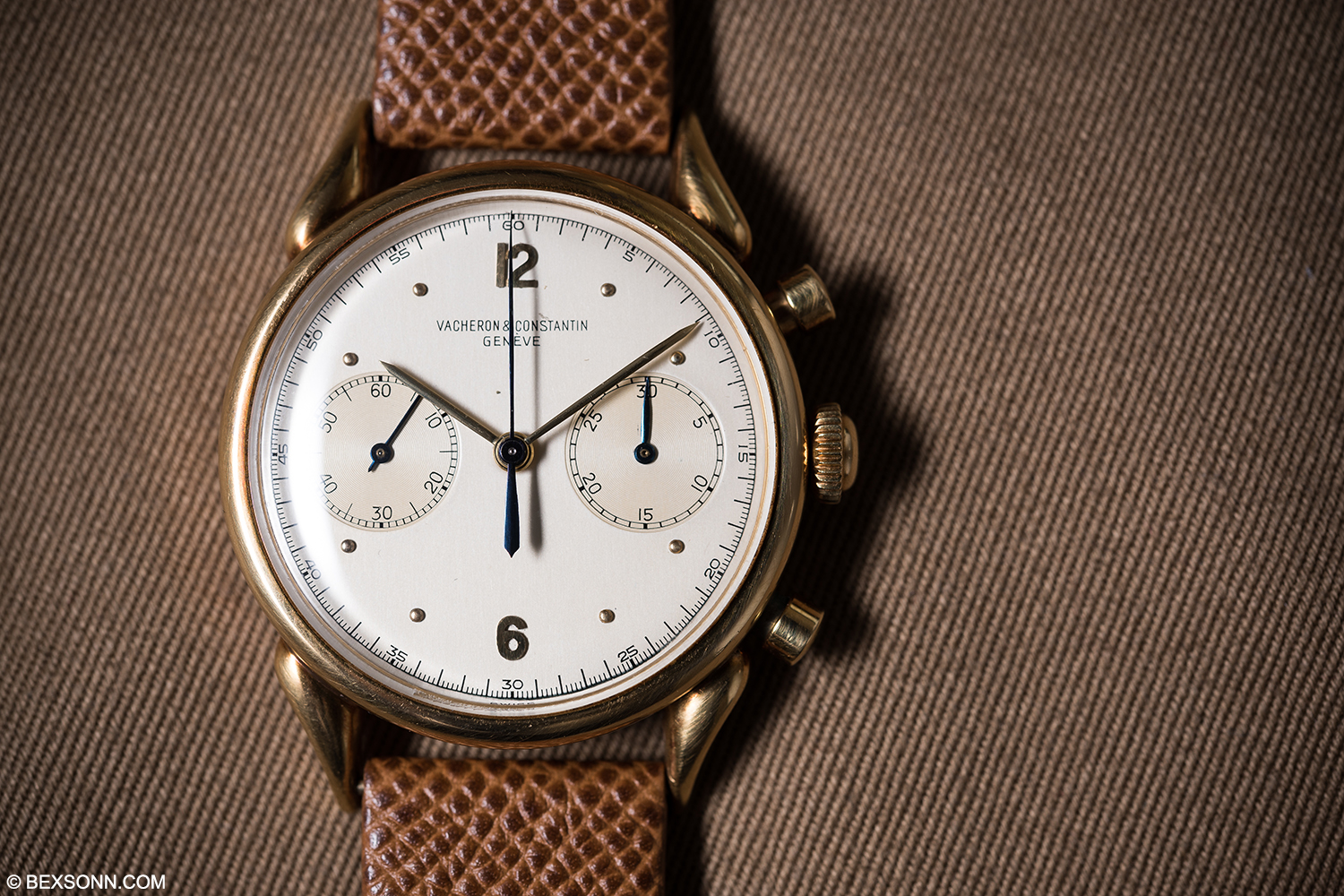 Lot 131: Unless you’ve been hiding under a rock this year, then you’ll know that it is Vacherons’ 260th anniversary and if so then you’ll also know that they recently introduced a interpretation of the Cornes de Vache but of course, here we are looking at one of the very examples it was modelled after. The Cornes de Vache name was coined because of its rather elaborated lugs, which were inspired by bull horns, a unique shape only used by Vacheron.
Lot 131: Unless you’ve been hiding under a rock this year, then you’ll know that it is Vacherons’ 260th anniversary and if so then you’ll also know that they recently introduced a interpretation of the Cornes de Vache but of course, here we are looking at one of the very examples it was modelled after. The Cornes de Vache name was coined because of its rather elaborated lugs, which were inspired by bull horns, a unique shape only used by Vacheron.
The 6087 was the first waterproof and amagnetic wristwatch chronograph Vacheron ever produced, hence the robust case and screw down case back. The yellow-gold case on this particular example has been tremendously well-preserved along with its crown and pushers. The dial’s condition mirrors that of the case and features large registers at 3:00 and 9:00, with applied yellow-gold Arabic numerals at 12 and 6 o’clock. The ref. 6087 in yellow-gold is particularly rare, as there were only 28 pieces known, making this piece sought after by Vacheron aficionados alike.
Estimate: €45,600 – €91,300
 1950 ROLEX REFERENCE 8171 “PADELLONE”
1950 ROLEX REFERENCE 8171 “PADELLONE”
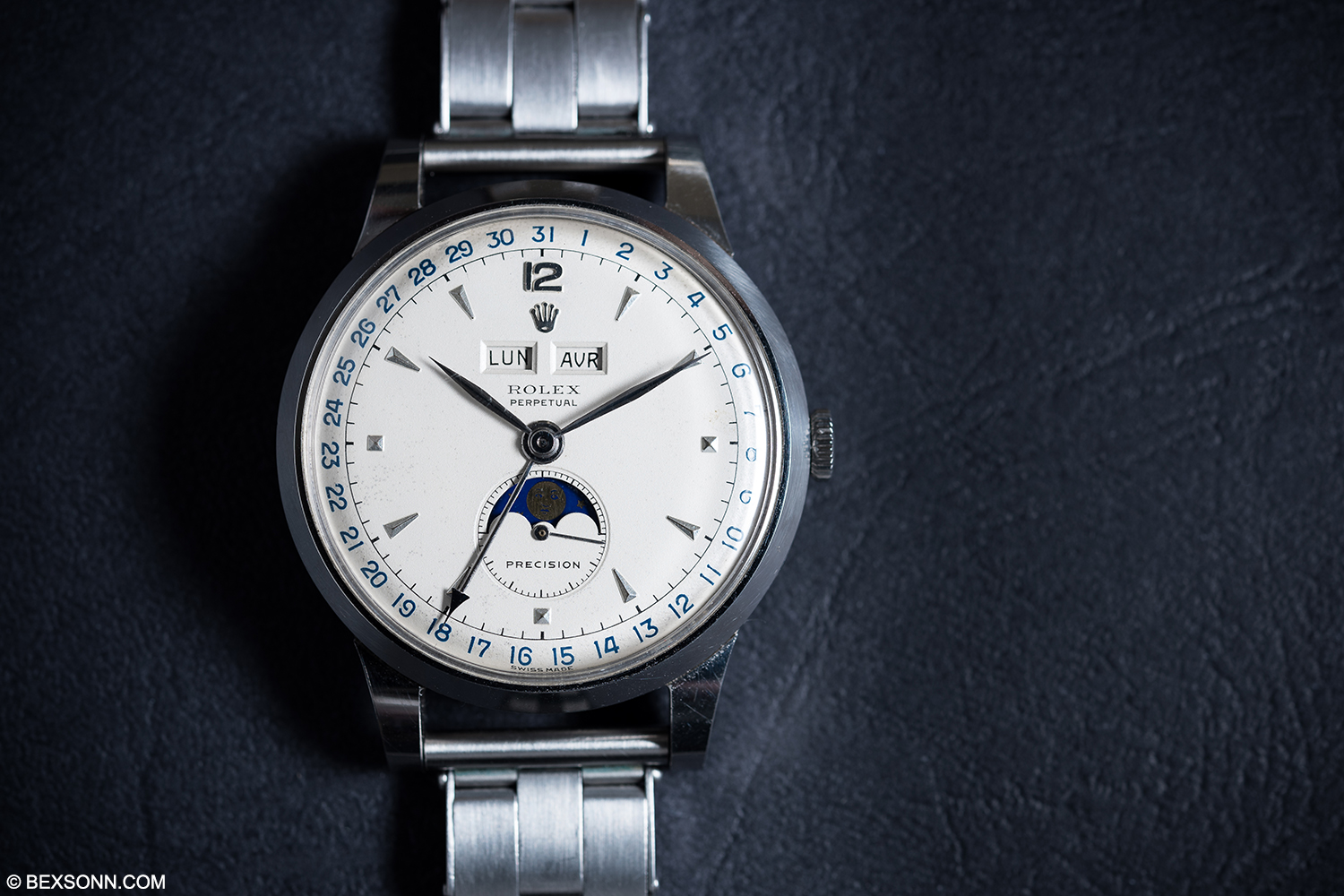 Lot 167: Another Rolex that we’ve picked out here, is the infamous reference 8171 also known as the “Padellone”, which translates to large frying pan in Italian (one must admit Italians have a way of making such mundane names sound cool.) The 8171 is an absolute legend among collectors and thus sought after. While Rolex are steeped in history when it comes to sports watches, they are scarcely known for producing more complicated pieces that feature day, date, month and moon phase, such as the 6062. Though it must be mentioned that this piece only featured a 36mm case but this is nothing to scoff at as timepieces during the 50s were often smaller. However, its larger brother – the ref 8171 – features a 38mm case. The Padellone (8171) as well as the 6062 are both very rare pieces as they were only produced for a very short period.
Lot 167: Another Rolex that we’ve picked out here, is the infamous reference 8171 also known as the “Padellone”, which translates to large frying pan in Italian (one must admit Italians have a way of making such mundane names sound cool.) The 8171 is an absolute legend among collectors and thus sought after. While Rolex are steeped in history when it comes to sports watches, they are scarcely known for producing more complicated pieces that feature day, date, month and moon phase, such as the 6062. Though it must be mentioned that this piece only featured a 36mm case but this is nothing to scoff at as timepieces during the 50s were often smaller. However, its larger brother – the ref 8171 – features a 38mm case. The Padellone (8171) as well as the 6062 are both very rare pieces as they were only produced for a very short period.
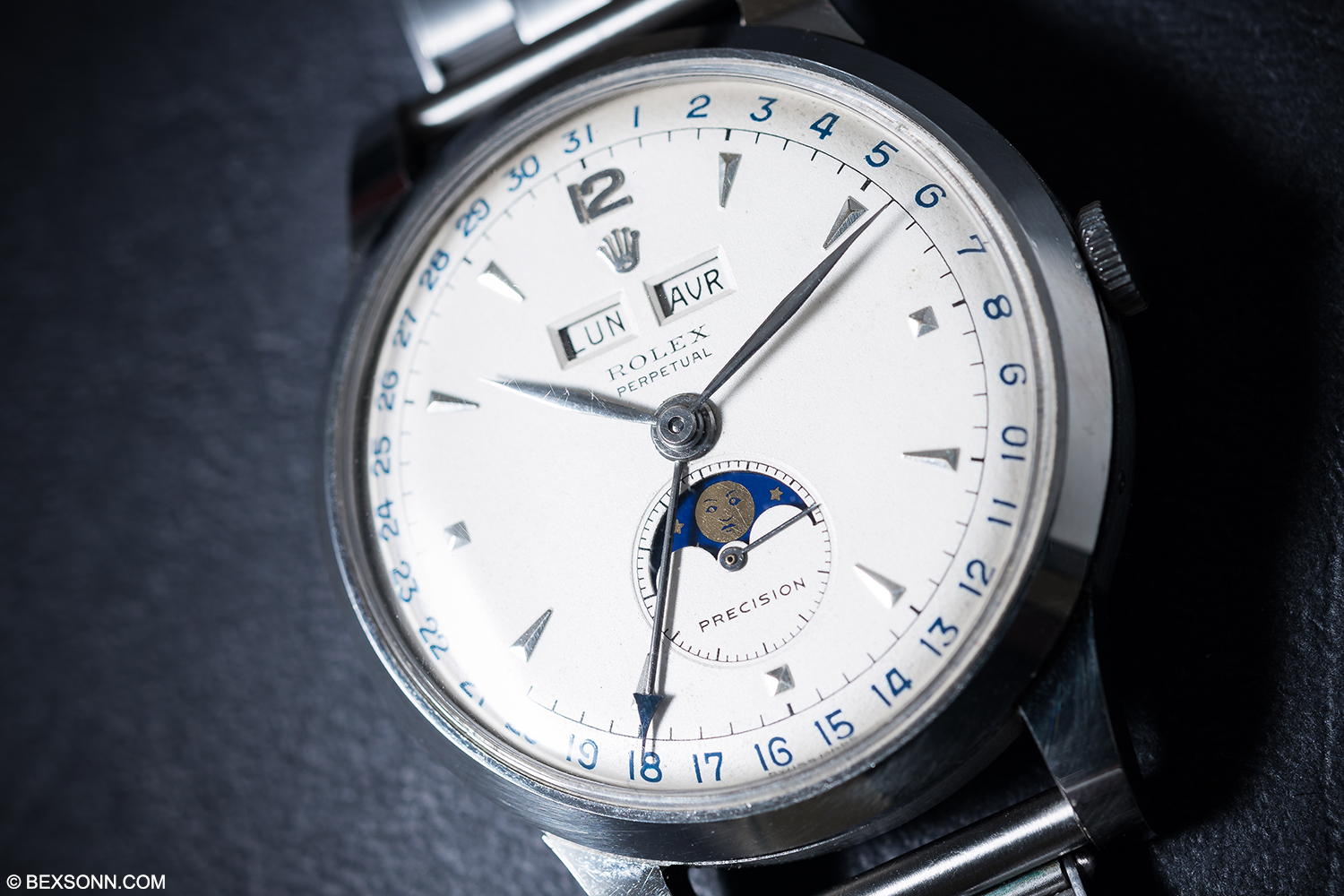 The ref. 8171 in yellow-gold is rare but such an example like this in stainless steel is even more so. This is simply because steel watches made by Rolex in the 50s were considered tool watches, so were often knocked around leaving them scratched and in need of a regular polish making the razor-sharp edges and facets rounded off. But this particular example is said to be unpolished and in mint condition, and in all honesty on close inspection I haven’t seen a better example of a stainless steel Padellone yet! Suffice to say it’s lived a sheltered life for the past 60 plus years and this is only a good thing. Expect to see this 8171 have a long drawn out bidding war when it goes under the hammer.
The ref. 8171 in yellow-gold is rare but such an example like this in stainless steel is even more so. This is simply because steel watches made by Rolex in the 50s were considered tool watches, so were often knocked around leaving them scratched and in need of a regular polish making the razor-sharp edges and facets rounded off. But this particular example is said to be unpolished and in mint condition, and in all honesty on close inspection I haven’t seen a better example of a stainless steel Padellone yet! Suffice to say it’s lived a sheltered life for the past 60 plus years and this is only a good thing. Expect to see this 8171 have a long drawn out bidding war when it goes under the hammer.
Estimate: €319,000 – €639,000
 1945 PATEK PHILIPPE REF. 1436 RATTRAPANTE CHRONOGRAPH
1945 PATEK PHILIPPE REF. 1436 RATTRAPANTE CHRONOGRAPH
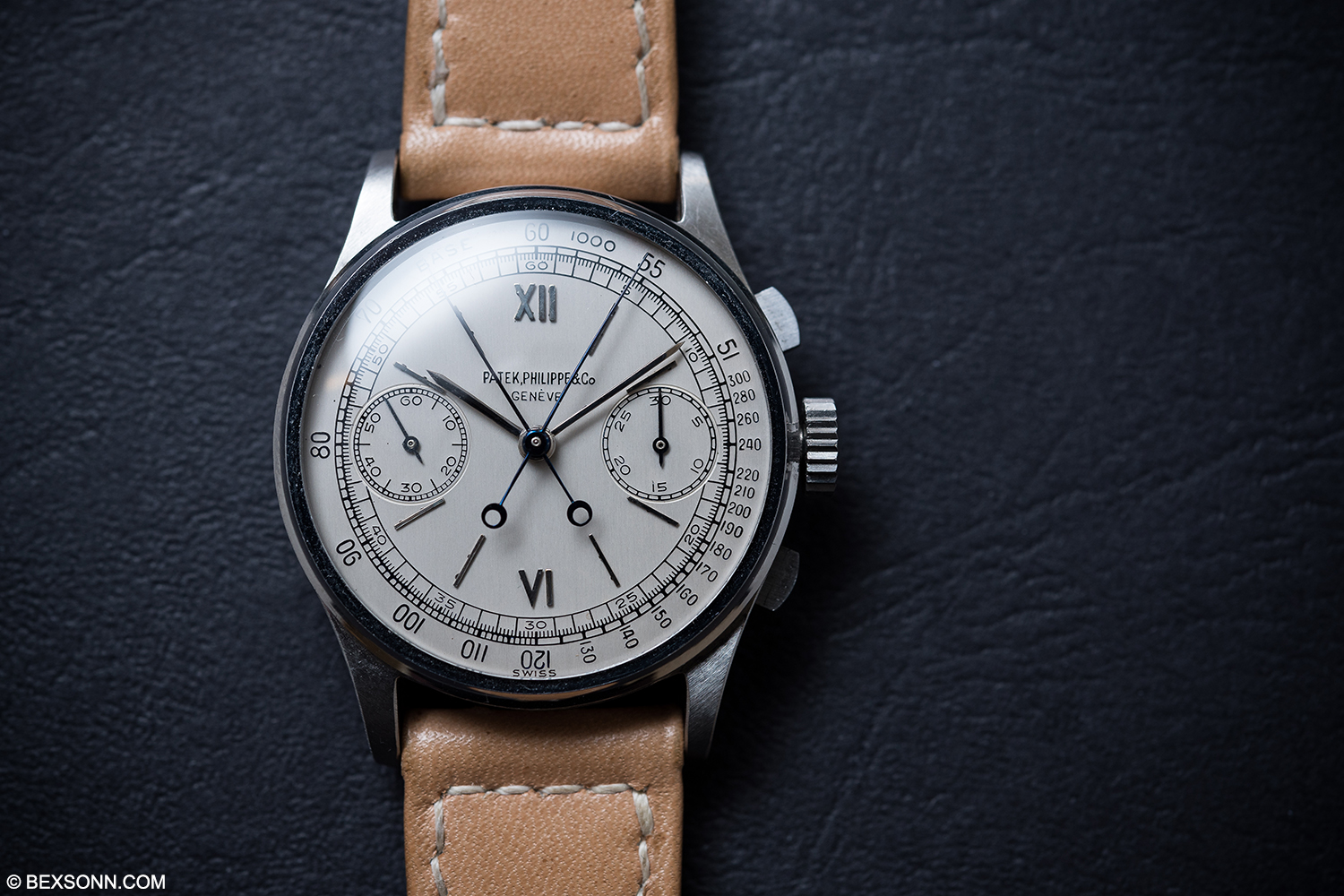 Lot 169: Not often do any of the elite watch manufacturers use stainless steel to house their most complicated timepieces but Patek are seldom seen to do so and we’ve even had hands-on experience with such timepieces. But when it comes to vintage Patek there is nothing rarer than one of their grand complications being housed in stainless steel and the reason why they choose to do so can be rather perplexing – especially when you consider they produced these examples in such small quantities.
Lot 169: Not often do any of the elite watch manufacturers use stainless steel to house their most complicated timepieces but Patek are seldom seen to do so and we’ve even had hands-on experience with such timepieces. But when it comes to vintage Patek there is nothing rarer than one of their grand complications being housed in stainless steel and the reason why they choose to do so can be rather perplexing – especially when you consider they produced these examples in such small quantities.
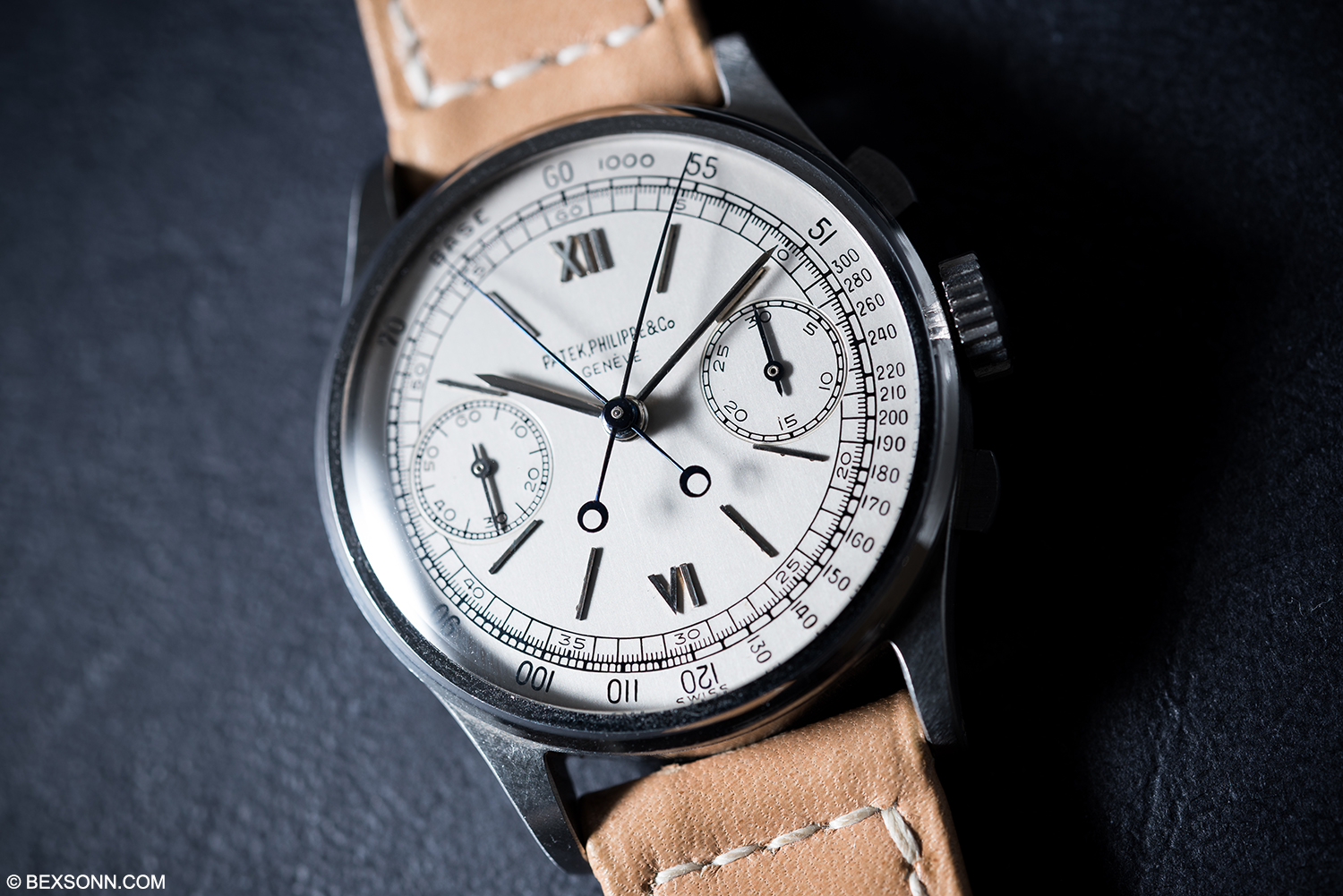 This extremely rare and important ref. 1436 is, in my opinion, one of the finest split-seconds chronograph that Patek Philippe have ever made and is in fact only one of two 1436 examples that exist. While according to the records there where 3 produced, one was unfortunately re-cased in gold at a later date. Most are normally cased in yellow and very scarcely pink-gold. This 1436 is said to still be in the private ownership of one of the worlds foremost watch collectors.
This extremely rare and important ref. 1436 is, in my opinion, one of the finest split-seconds chronograph that Patek Philippe have ever made and is in fact only one of two 1436 examples that exist. While according to the records there where 3 produced, one was unfortunately re-cased in gold at a later date. Most are normally cased in yellow and very scarcely pink-gold. This 1436 is said to still be in the private ownership of one of the worlds foremost watch collectors.
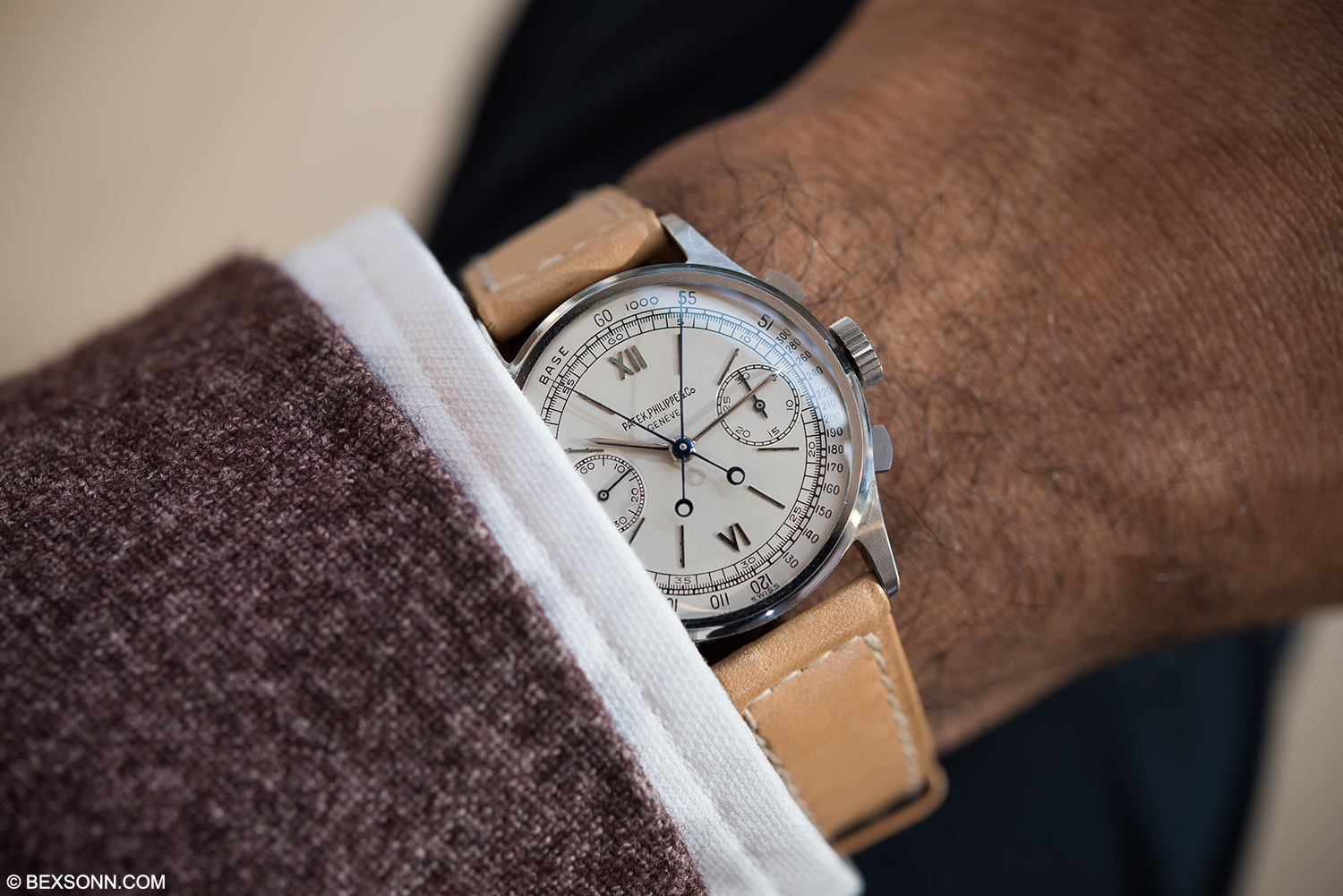 It is believed that this ref. 1436 has sparsely been polished and probably never been dismantled, hence its very sharp 33mm case. The dial, not too dissimilar from the 1463, has aged nicely and the scales and signature have all been incredibly preserved and again the use of champlevé technique, keeps these features well-defined. Is it possible we could yet see another world record set during this auction for a steel Patek? It might just happen…
It is believed that this ref. 1436 has sparsely been polished and probably never been dismantled, hence its very sharp 33mm case. The dial, not too dissimilar from the 1463, has aged nicely and the scales and signature have all been incredibly preserved and again the use of champlevé technique, keeps these features well-defined. Is it possible we could yet see another world record set during this auction for a steel Patek? It might just happen…
Estimate: €1,370,000 – €2,740,000
 1950 VACHERON CONSTANTIN REF. 4072
1950 VACHERON CONSTANTIN REF. 4072
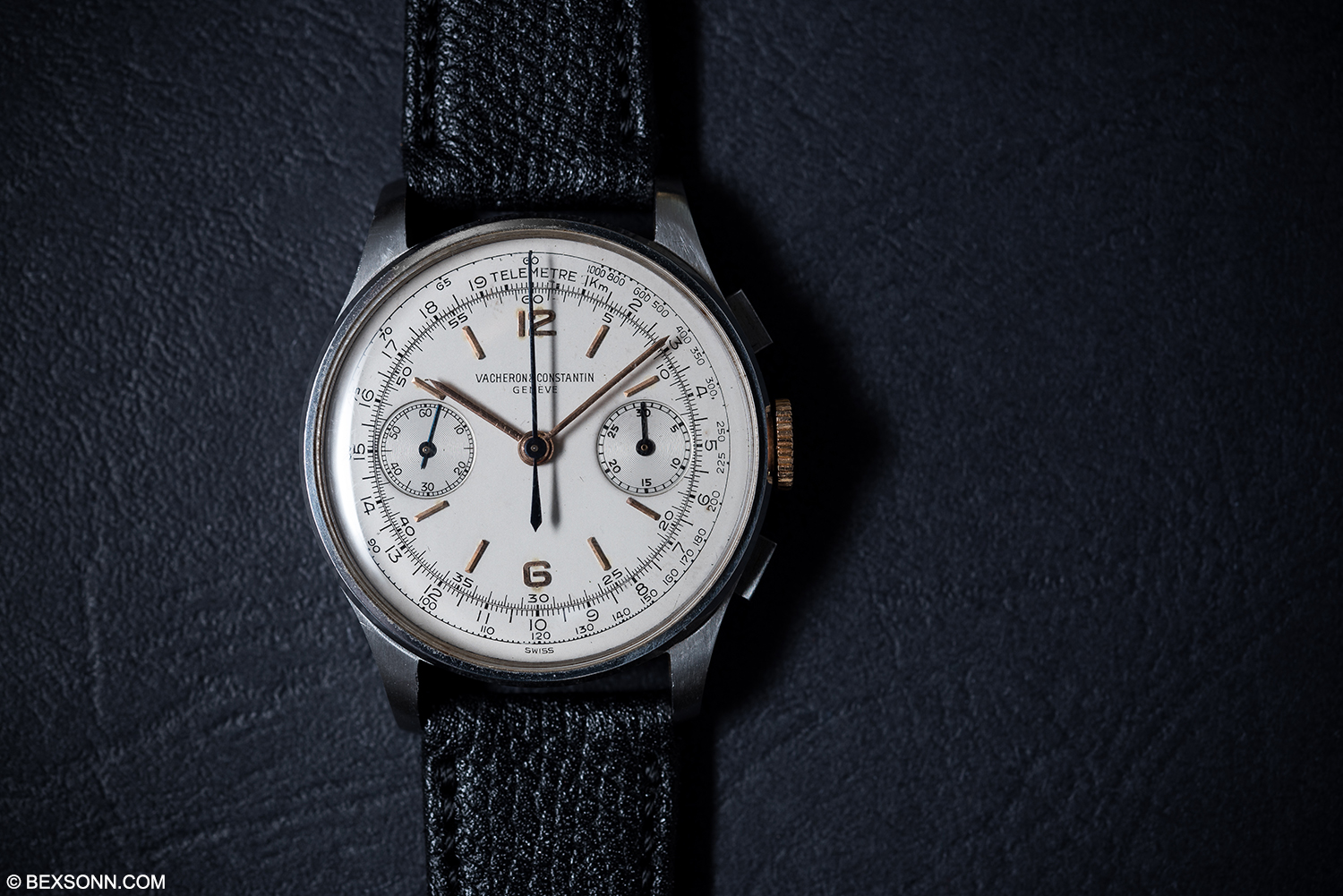 Lot 180: As you are well aware I have already highlighted a Vacheron 4072 but this one is a little bit different. This is one of the later references, which features the calibre 13”’-434 but most notably it is cased in stainless steel. Just like their peers Vacheron also cased complicated timepieces in stainless steel and produced them in very small quantities. This 4072 stands out because of the use of a pink-gold winding crown, hour and minutes hands, as well as hour markers too. Not only this but the unmolested stainless steel case makes it rather special.
Lot 180: As you are well aware I have already highlighted a Vacheron 4072 but this one is a little bit different. This is one of the later references, which features the calibre 13”’-434 but most notably it is cased in stainless steel. Just like their peers Vacheron also cased complicated timepieces in stainless steel and produced them in very small quantities. This 4072 stands out because of the use of a pink-gold winding crown, hour and minutes hands, as well as hour markers too. Not only this but the unmolested stainless steel case makes it rather special.
Estimate: €73,000 – €128,000
 1968 ROLEX COSMOGRAPH DAYTONA REF. 6241 “THE HERMÈS PAUL NEWMAN”
1968 ROLEX COSMOGRAPH DAYTONA REF. 6241 “THE HERMÈS PAUL NEWMAN”
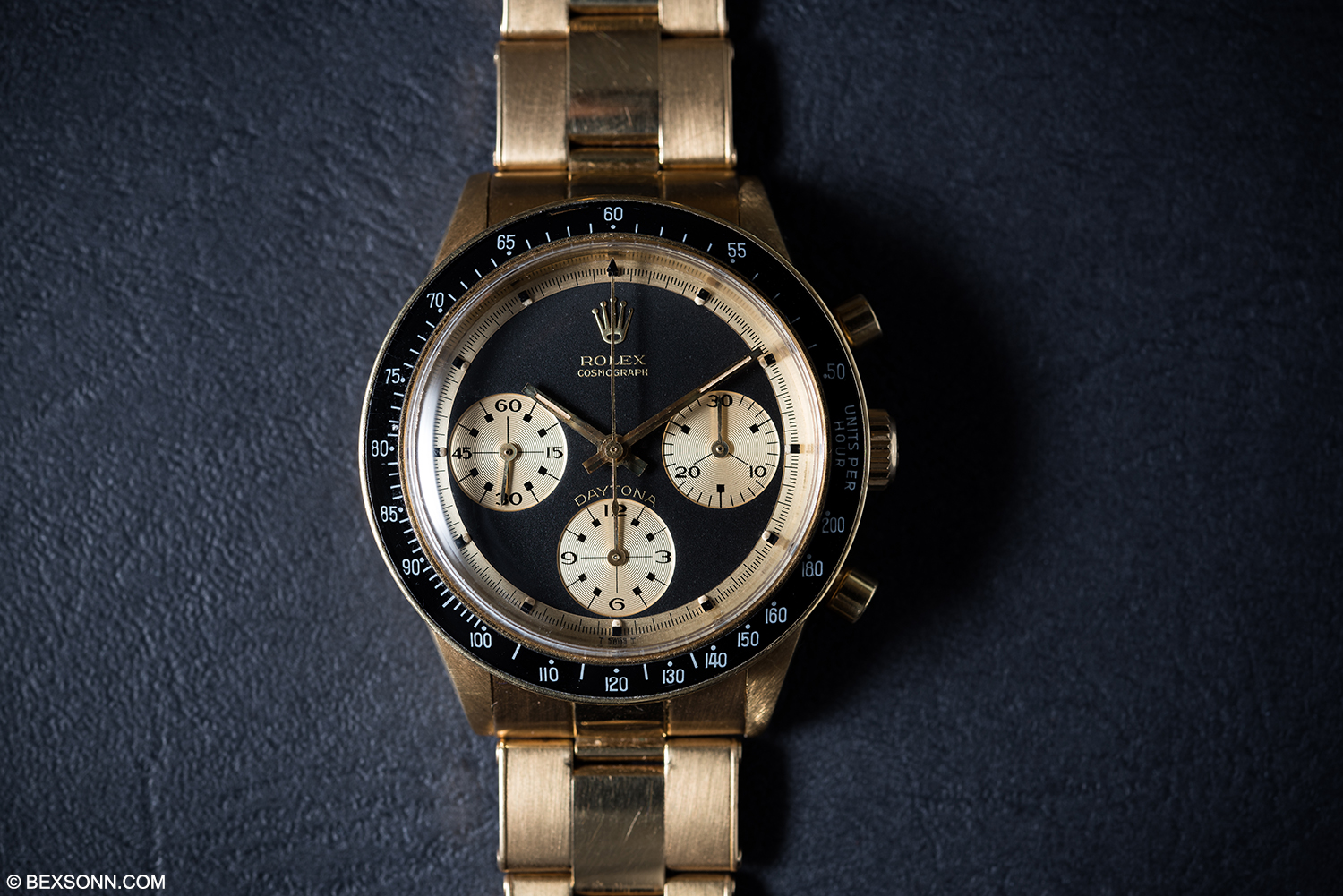 Lot 222: What watch auction would be complete without a Paul Newman Daytona? By now you’ve surely all heard of the Paul Newman Daytona, which makes use of exotic subsidiary dials over the more conventional Daytona but of course this one is a little more special. It wasn’t uncommon that Rolex, one of the leading watch brands in the world, worked with leading luxury retailers such as HERMÈS.
Lot 222: What watch auction would be complete without a Paul Newman Daytona? By now you’ve surely all heard of the Paul Newman Daytona, which makes use of exotic subsidiary dials over the more conventional Daytona but of course this one is a little more special. It wasn’t uncommon that Rolex, one of the leading watch brands in the world, worked with leading luxury retailers such as HERMÈS.
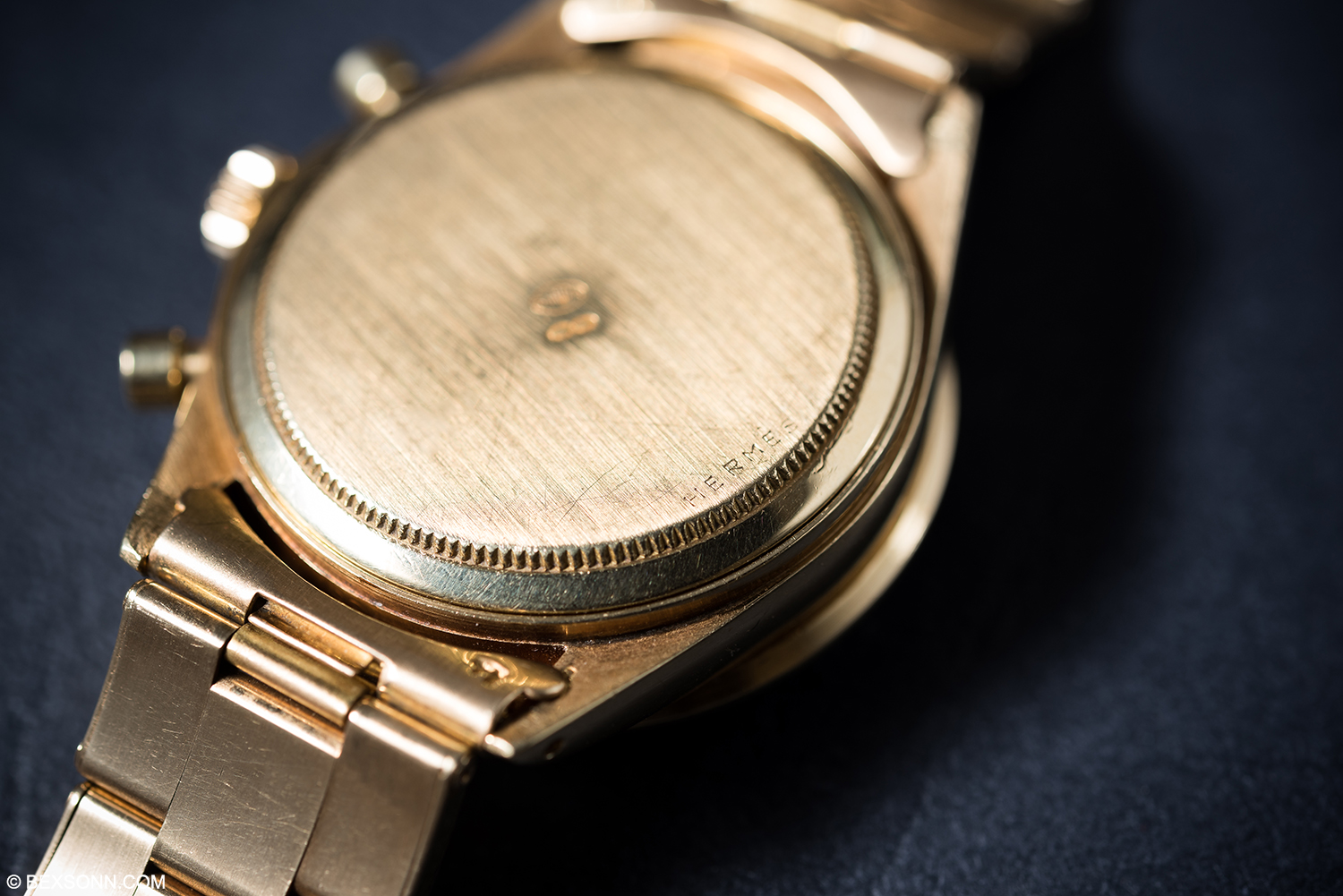 Without the use of a luxury retailer’s name, this Rolex ref. 6241 Paul Newman Daytona is highly sought after. It features an acrylic bezel with printed tachymeter scale and pump pushers. With a black matte dial, gold registers and gilt writing, it is often referred to by collectors as the “John Player Special.” However, turn this Paul Newman Daytona over and you have an added element of collectability.
Without the use of a luxury retailer’s name, this Rolex ref. 6241 Paul Newman Daytona is highly sought after. It features an acrylic bezel with printed tachymeter scale and pump pushers. With a black matte dial, gold registers and gilt writing, it is often referred to by collectors as the “John Player Special.” However, turn this Paul Newman Daytona over and you have an added element of collectability.
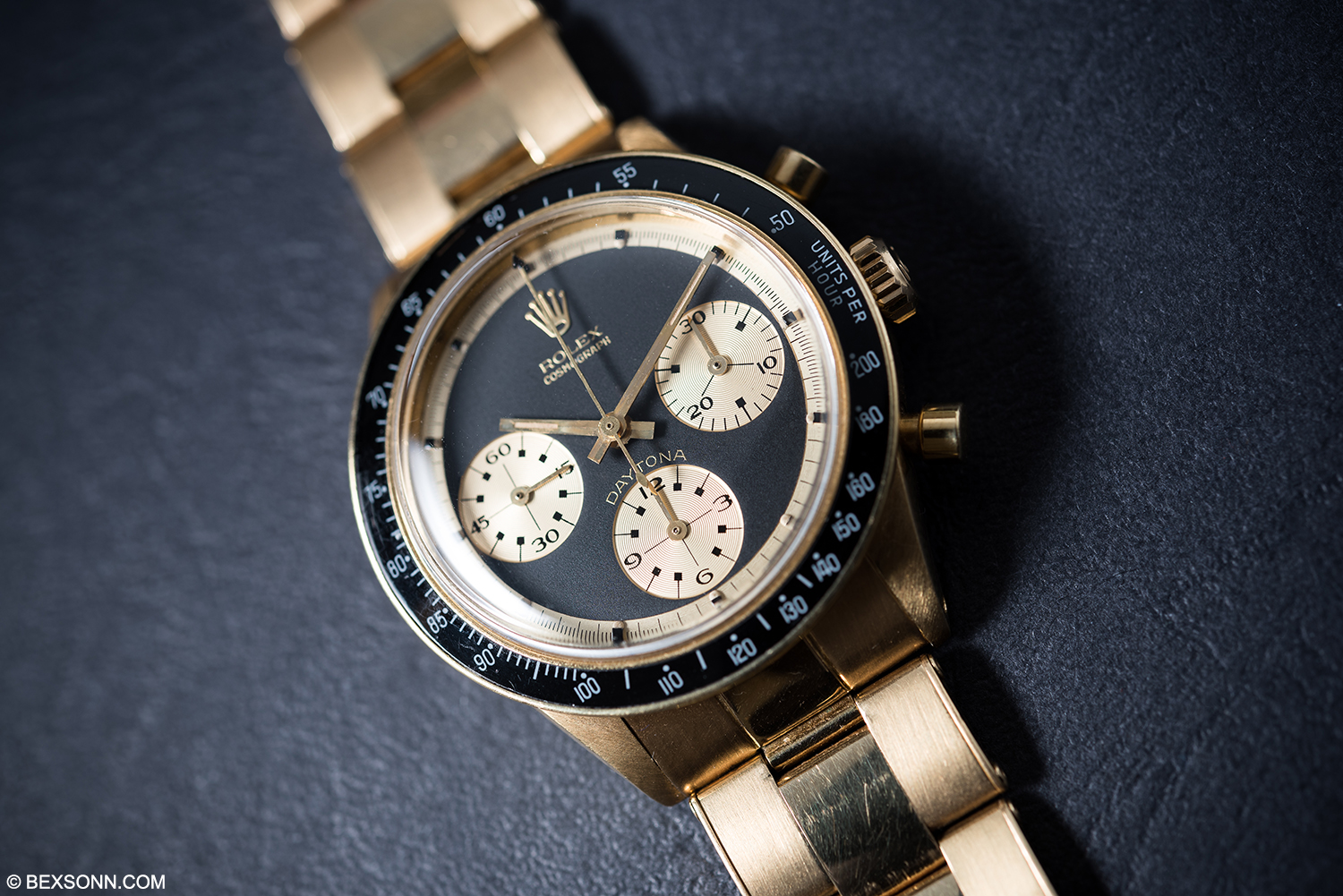 It has been confirmed by HERMÈS in Paris that this very piece was sold by them on the 30th November 1971. You see, in this particular example the dial wasn’t signed however, the case back was stamped with HERMÈS and while this is a minor detail it makes this piece highly desirable. Not to mention the condition of the case and how well-preserved the HERMÈS stamp is after some 45 odd years. I expect this piece to exceed the estimate below.
It has been confirmed by HERMÈS in Paris that this very piece was sold by them on the 30th November 1971. You see, in this particular example the dial wasn’t signed however, the case back was stamped with HERMÈS and while this is a minor detail it makes this piece highly desirable. Not to mention the condition of the case and how well-preserved the HERMÈS stamp is after some 45 odd years. I expect this piece to exceed the estimate below.
Estimate: €274,000 – €548,000
 1953 ROLEX TRIPLE CALENDAR MOON PHASE REF. 6062 “STELLINE”
1953 ROLEX TRIPLE CALENDAR MOON PHASE REF. 6062 “STELLINE”
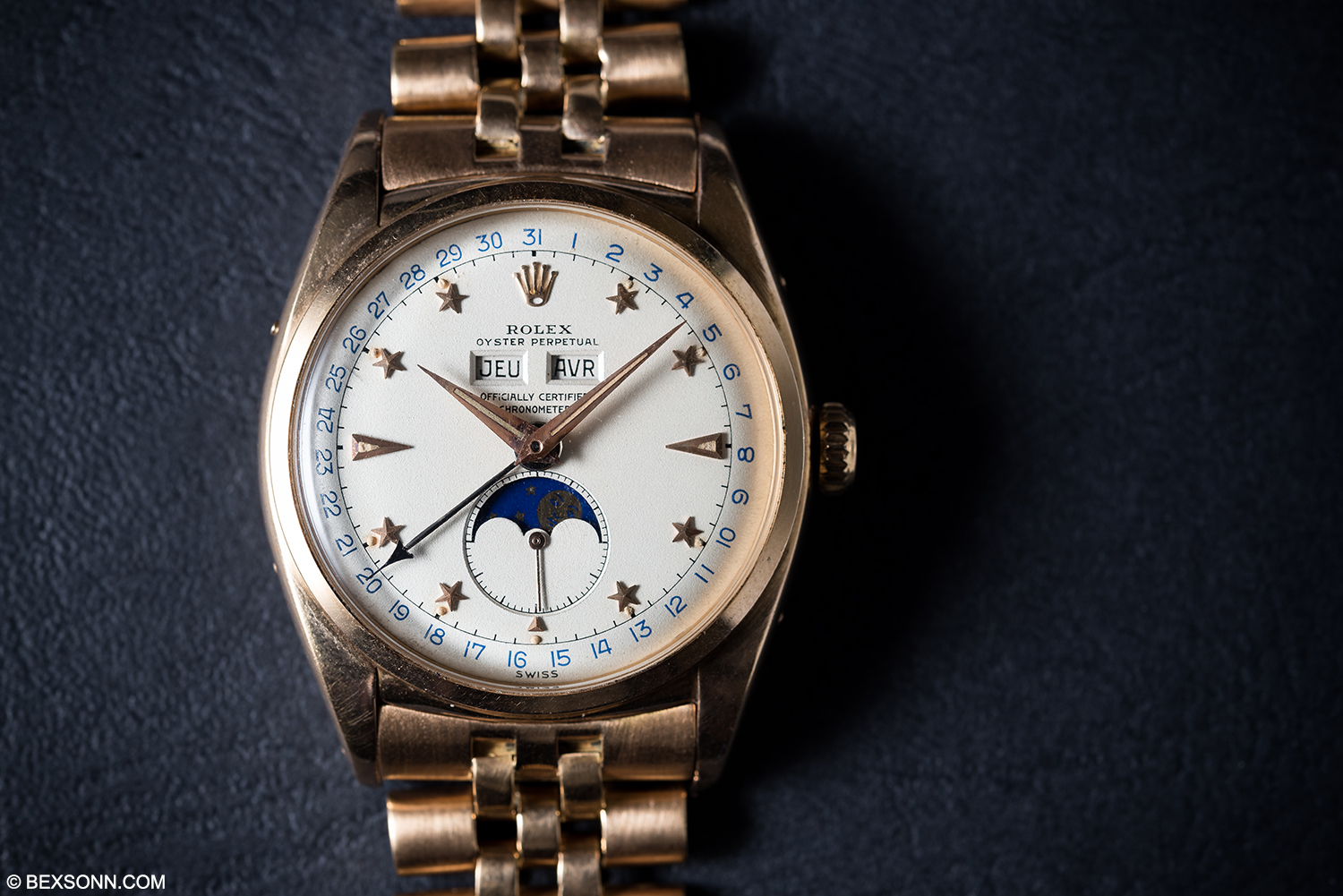 Lot 253: As you’ve already read above (Lot: 167) the Padellone was one of only two Rolex models to ever feature a full calendar paired with a moon phase indication. This is the reference 6062 is the other and epitomises what Rolex is all about. The very distinct 36mm Rolex Oyster case, with in-house movement, coupled with the matte grain silver dial, adds another element of savoir-faire that most other triple calendar moon phases would otherwise lack. The reference 6062 was only made for a short period of time, thus making each example considerably rare.
Lot 253: As you’ve already read above (Lot: 167) the Padellone was one of only two Rolex models to ever feature a full calendar paired with a moon phase indication. This is the reference 6062 is the other and epitomises what Rolex is all about. The very distinct 36mm Rolex Oyster case, with in-house movement, coupled with the matte grain silver dial, adds another element of savoir-faire that most other triple calendar moon phases would otherwise lack. The reference 6062 was only made for a short period of time, thus making each example considerably rare.
Examples of the 6062 have only been seen in stainless steel, yellow-gold and pink-gold, with the latter being the rarer of the two. And then there is the dial configuration. At Phillips Watches Auction One a 6062 in pink-gold sold well above the estimate but this particular example of the 6062 features 8 five-pointed faceted stars for the hour markers, which is considered the ultimate and has been nicknamed the “Stelline” (Starlet in English), once again by the Italians.
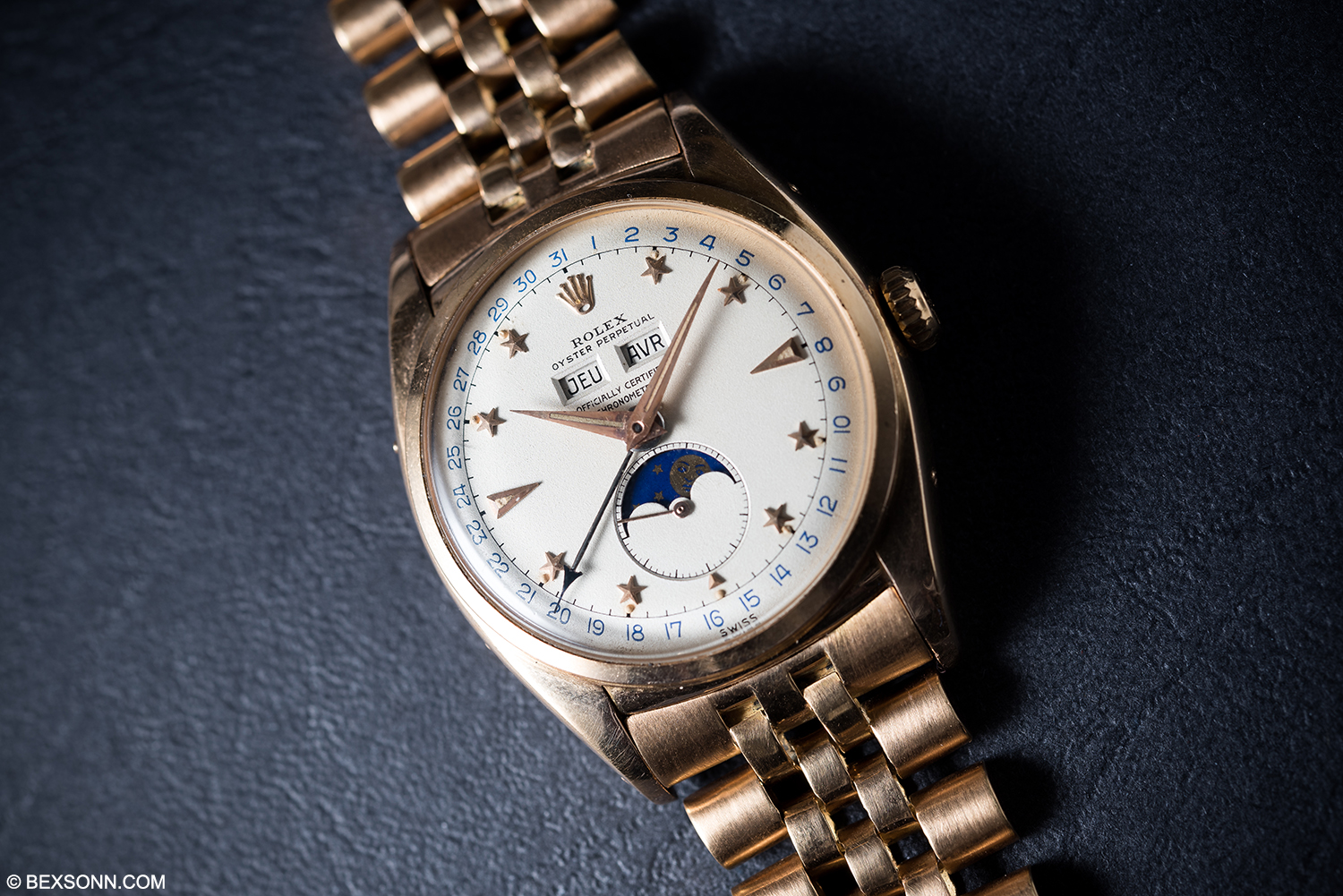 It is the second time this particular piece is being auctioned, the last time being in 2004. However, in saying that the case has been well-preserved as it has been safely tucked away in a bank vault. Above all the little details of this 6062 it is its overall condition that makes it truly exceptional. I believe it’s examples like these that make one of the most revered watch manufacturers so intriguing.
It is the second time this particular piece is being auctioned, the last time being in 2004. However, in saying that the case has been well-preserved as it has been safely tucked away in a bank vault. Above all the little details of this 6062 it is its overall condition that makes it truly exceptional. I believe it’s examples like these that make one of the most revered watch manufacturers so intriguing.
Estimate: €457,000 – €913,000
 1951 PATEK PHILIPPE CHRONOGRAPH REF. 1463
1951 PATEK PHILIPPE CHRONOGRAPH REF. 1463
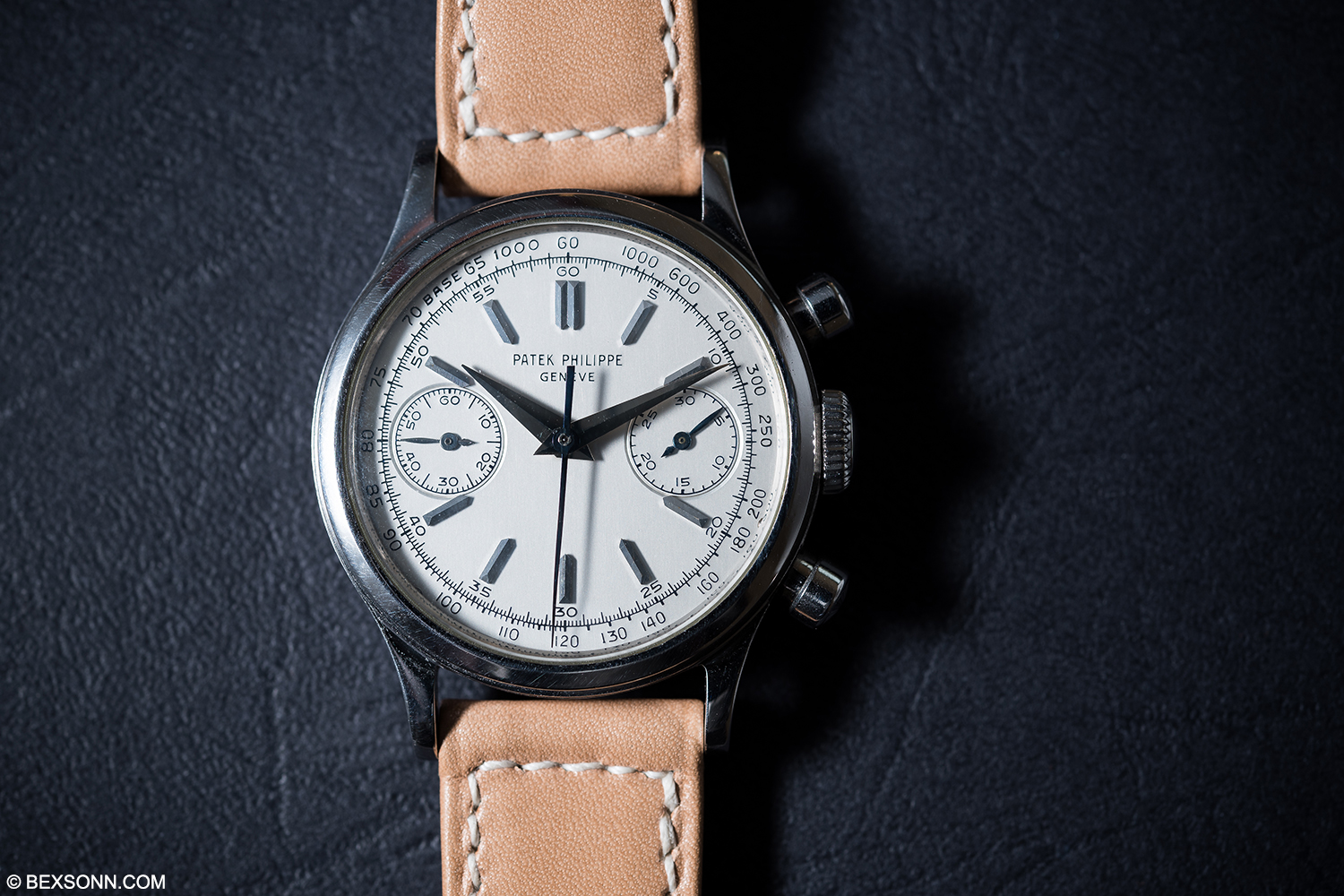 Lot 272: Probably the least glamorous Patek’ amongst the ones that I’ve highlighted thus far, this is a personal favourite for me and last time round I also highlighted a very similar example. I’ve said it before and I’ll say it again, stainless steel vintage Patek chronographs are just about as cool as it gets but the ref. 1463 can boast the fact that it is indeed the first ever fully waterproof Patek chronograph. When introduced in the early 1940s, the stainless steel ref. 1463 probably best epitomised the term “tool-watch.” Just look at it – it is easily one of Patek’ most versatile vintage timepieces and there is no doubt in my mind that when Patek introduced this watch, they had the active bon vivant clientele in mind.
Lot 272: Probably the least glamorous Patek’ amongst the ones that I’ve highlighted thus far, this is a personal favourite for me and last time round I also highlighted a very similar example. I’ve said it before and I’ll say it again, stainless steel vintage Patek chronographs are just about as cool as it gets but the ref. 1463 can boast the fact that it is indeed the first ever fully waterproof Patek chronograph. When introduced in the early 1940s, the stainless steel ref. 1463 probably best epitomised the term “tool-watch.” Just look at it – it is easily one of Patek’ most versatile vintage timepieces and there is no doubt in my mind that when Patek introduced this watch, they had the active bon vivant clientele in mind.
There are different dial variations available on the 1463 and the last one auctioned featured Breguet numerals and leaf-shape hands. This example features a later dial and makes use of dauphine hands, faceted hour markers but there is also the omission of the railway track, making it a little more contemporary. This current example is the only publicly known reference 1463 in steel to feature such a dial layout, making it extremely rare.
Estimate: €228,000 – €457,000
 1953 PATEK PHILIPPE PERPETUAL CALENDAR MOON PHASE REF. 2497
1953 PATEK PHILIPPE PERPETUAL CALENDAR MOON PHASE REF. 2497
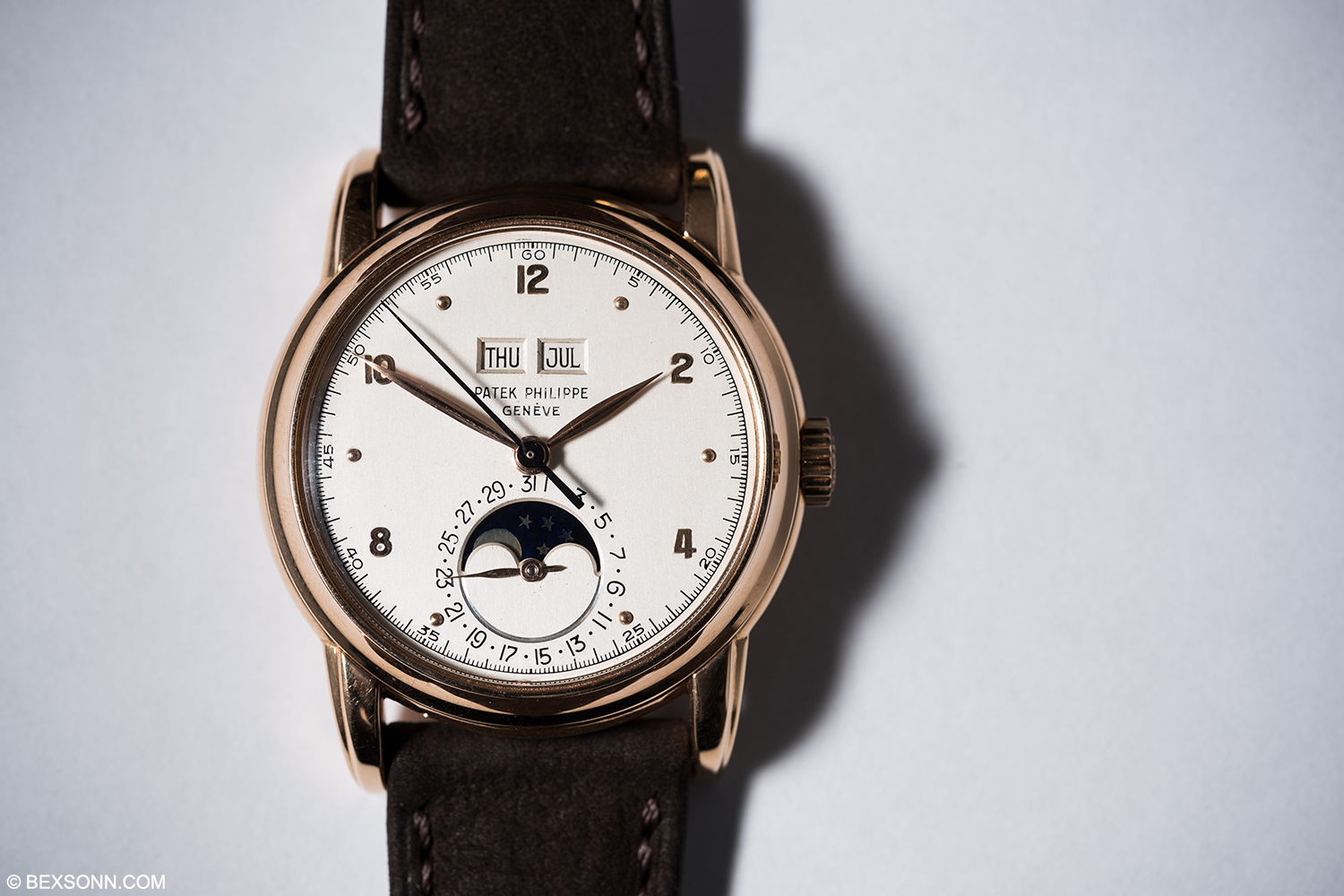 Lot 295: Last but not least is this Patek Philippe ref. 2497. First introduced in 1951 the ref. 2497 has the perfect balance of elegance and formation. The 2497 is even considered to be one of the most beautiful perpetual calendar wristwatches ever made. What is even more interesting about this piece is that it’s a first series produced by Vichet as opposed to the later versions, which were made by Wenger. Firstly, the lugs were shorter than those made by Wenger and secondly, the case back featured a flat surface towards the centre. And while we’re are on the topic of the case back, this one in fact has an engraving that reads “Peter S. Knoll, New York City, 1980 – who was the second generation of the contemporary furniture family, who purchased said piece during an auction in 1980.
Lot 295: Last but not least is this Patek Philippe ref. 2497. First introduced in 1951 the ref. 2497 has the perfect balance of elegance and formation. The 2497 is even considered to be one of the most beautiful perpetual calendar wristwatches ever made. What is even more interesting about this piece is that it’s a first series produced by Vichet as opposed to the later versions, which were made by Wenger. Firstly, the lugs were shorter than those made by Wenger and secondly, the case back featured a flat surface towards the centre. And while we’re are on the topic of the case back, this one in fact has an engraving that reads “Peter S. Knoll, New York City, 1980 – who was the second generation of the contemporary furniture family, who purchased said piece during an auction in 1980.
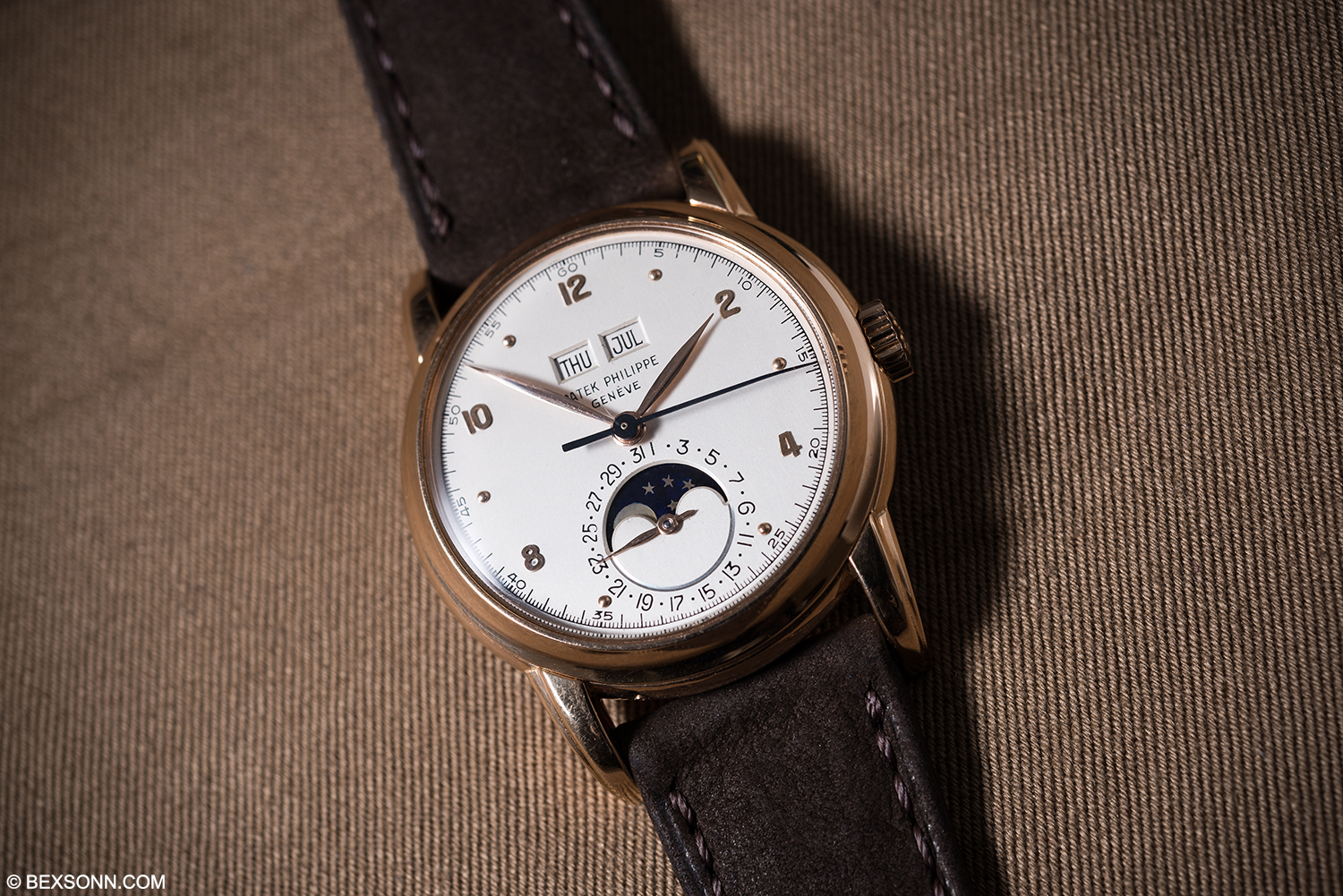 There are said to be in total, only 197 examples made across both the reference 2497 and 2438/1. With the majority of them produced in yellow-gold, this pink-gold example is considered exceptionally rare. There are in fact only six examples known of the ref. 2497, fitted with a flat Vichet case back and coupled with how well-preserved the case is on this piece, I’d say that makes this 2497 just about perfect.
There are said to be in total, only 197 examples made across both the reference 2497 and 2438/1. With the majority of them produced in yellow-gold, this pink-gold example is considered exceptionally rare. There are in fact only six examples known of the ref. 2497, fitted with a flat Vichet case back and coupled with how well-preserved the case is on this piece, I’d say that makes this 2497 just about perfect.
Estimate: €365,000 – €731,000
 FINAL THOUGHTS
FINAL THOUGHTS
These ten watches are just a snippet of what we have seen from the Phillips autumn auction and there are indeed a lot more up for auction. Though I may add that while some of these lots may have been seen at auction before, I think it is clear that Phillip with the help of Bacs & Co, are rapidly confirming their place as a leader in the high-end watch auction market place. As I mentioned at the start, the quality of the timepieces just seen here are quite remarkable and this only bodes well for the vintage watch market.
For more lot information on The Phillips Geneva Auction: TWO that will take place on the 7th & 8th November in La Reserve Hotel, Geneva, visit the official Phillips Watches website to view the catalogue.
